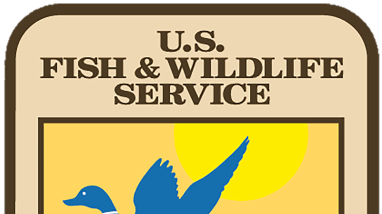Non-Federal entities who are planning activities that may harm endangered or threatened wildlife or fish species are required to obtain a permit from our agency under Section 10 of the Endangered Species Act (ESA). Habitat Conservation Plans (HCPs) and General Conservation Plans (GCPs) provide a path to balance wildlife conservation with the needs of the community and local economies.
These needs may include a variety of needs from agriculture and ranching operations to infrastructure maintenance and residential development. The primary objective of the HCP and GCP programs is to take a strategic approach to conserve species and the ecosystems they depend on while improving efficiencies in permitting processes. We review HCPs and GCPs developed by a wide range of landowners and partners from community developers to county planners. Our review helps ensure that mitigation measures are included in the plan to minimize impacts to listed species and results in conservation for the species in the area. Our review and approval of the project results in issuing a permit for the project to the landowner. The public has an opportunity to comment on projects before they are permitted.
These GCPs provide a comprehensive strategy to promote the long-term conservation of federally listed species while allowing the Service to work more efficiently and effectively with landowners and ensure their compliance under the Endangered Species Act (ESA). Through this collaborative approach, the Service will work with proponents engaged in activities associated with a GCP to meet statutory and regulatory requirements while promoting conservation of federally listed species. Each GCP allows the Service to take a comprehensive analysis of habitat impacts while ensuring conservation is being implemented in a way that aids recovery of the species.
To apply for an incidental take permit under one of the below GCPs, please use the Service's Eligibility Determination document associated with the GCP that you are interested in to help with deciding whether your project, or projects, may be eligible for an ESA section 10(a)(1)(B) permit under the GCP. If eligible, the Eligibility Determination document will inform you of the next steps. To apply, submit your completed and signed eligibility determination, Federal Fish and Wildlife Permit Application Form, and Individual Project Package electronically to FW8VenturaITP@fws.gov with the subject line “GCP Company/Landowner Name Permit Application.” Mail the hardcopy of the Federal Fish and Wildlife Permit Application and $100 processing fee to: U.S. Fish and Wildlife Service, Ventura Fish and Wildlife Office, 2493 Portola Road, Suite B, Ventura, California 93003. Applicants are required to submit Individual Project Packages for Covered Activities occurring in the Planning Area. Individual Project Packages must be submitted as part of the Project Application Package. The Project Application Package must be approved by the Service
GCP Cultivation Activities occurring within and around Los Alamos in Santa Barbara County
GCP for Cultivation in Santa Barbara County
Signed General Conservation Plan for Cultivation Activities in Santa Barbara County
Eligibility Determination Form for GCP for Santa Barbara County Cultivation Activities
GCP for Oil and Gas Activities
Final General Conservation Plan for Oil and Gas Activities
Final Programmatic EA for Oil and Gas Activities
FONSI and Findings General Conservation Plan for Oil and Gas Activities in Santa Barbara County
GCP for Amphibians in Santa Cruz County
Final General Conservation Plan for Amphibians in Southern Santa Cruz County


